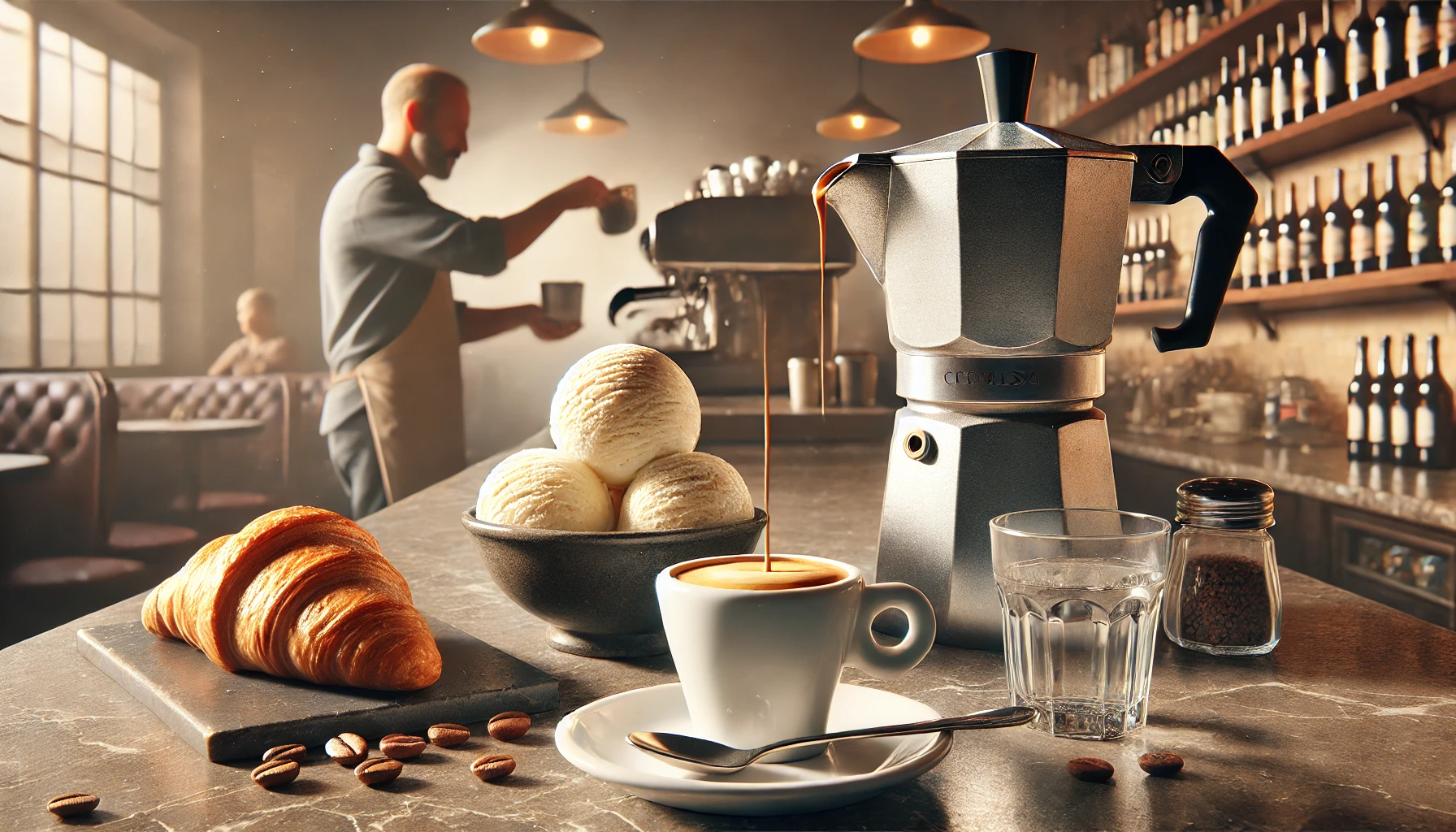Italy is more than just the birthplace of espresso—it’s a country where coffee is woven into the fabric of daily life. From quick morning shots at the bar to decadent after-dinner treats like affogato, Italian coffee culture is rich with history, ritual, and regional pride.
In this article, we’ll take you on a journey through the traditions, etiquette, and iconic drinks that define Italian coffee, and show you how to bring a little bit of Italy into your own routine.
Coffee as a Daily Ritual in Italy
In Italy, coffee isn’t just a beverage—it’s an essential part of life. Italians drink coffee throughout the day, but they do so with strict unwritten rules that shape how and when certain drinks are enjoyed.
Coffee bars (not cafés) are central meeting places, where locals drop in for a quick espresso while standing at the counter. It’s fast, social, and rooted in tradition.
Most Italians:
- Drink coffee at home or at a bar, rarely “to go”
- Start the day with caffè latte or cappuccino
- Drink espresso (simply called “caffè”) throughout the day
- Avoid milk-based coffee after meals
Popular Italian Coffee Drinks
Espresso (Caffè)
The foundation of Italian coffee culture. A single, short shot of espresso served in a small cup, often consumed in under a minute at the bar. Strong, intense, and always the starting point.
Caffè Doppio
A double espresso for those who want more volume or caffeine, but still served in the same fast, no-nonsense style.
Cappuccino
Equal parts espresso, steamed milk, and milk foam. It’s a morning-only drink—ordering it after 11 a.m. is considered unusual in Italy.
Caffè Latte
More milk than a cappuccino, often made at home. In cafés, if you order “latte,” you’ll get a glass of milk, so always say “caffè latte.”
Macchiato
Espresso “stained” with a dash of milk (hot or cold). A good option for those who want something slightly creamier without a full milk drink.
Caffè Corretto
An espresso “corrected” with a shot of alcohol—often grappa, sambuca, or brandy. Traditionally consumed after meals.
Affogato
A scoop of vanilla gelato “drowned” in hot espresso—a hybrid dessert and coffee. Elegant, simple, and indulgent.
How Italians Drink Their Coffee
There’s an unspoken etiquette around coffee in Italy that visitors quickly learn:
- No milk after 11 a.m.: Milk is seen as heavy and suitable only for breakfast.
- No large sizes: Coffee is small, concentrated, and never supersized.
- No flavored syrups or whipped cream: Italian coffee is straightforward and not sweetened with additives.
- Coffee is rarely taken to-go: It’s meant to be consumed at the bar, quickly and socially.
- Sugar is acceptable: Italians often sweeten espresso, but rarely add anything else.
Regional Variations
Though Italy is united by espresso, each region has its own twist.
- Naples: Coffee is bold and dark, often brewed with a traditional cuccumella pot at home.
- Turin: Birthplace of Bicerin, a layered drink of espresso, chocolate, and cream.
- Trieste: Strong Austro-Hungarian influence, with drinks like capo in b (macchiato in a glass).
These regional drinks reflect Italy’s diverse cultural history and pride in local identity.
The Espresso Bar Experience
In most of Italy, especially in cities, locals drink coffee standing at the bar, where it’s cheaper and faster. You walk in, pay first, hand your receipt to the barista, and enjoy your coffee immediately.
Sitting at a table often comes with higher prices—especially in touristy areas.
The barista is a respected figure, often knowing regular customers’ orders by heart. It’s a relationship built on routine and rhythm.
Bringing Italian Coffee Culture Home
Want to enjoy Italian-style coffee at home? Here’s how:
- Invest in a moka pot or manual espresso machine
- Choose Italian-style dark roasted beans
- Drink from small porcelain cups
- Keep it simple—no syrups or gimmicks
- Practice the timing: espresso for any time, cappuccino only in the morning
- Enjoy your coffee with presence, not on the go
Final Thoughts: Simplicity, Ritual, and Flavor
Italian coffee culture is built on three pillars: simplicity, quality, and community. Whether you’re sipping a bold espresso at a Neapolitan bar or savoring an affogato in Rome, every cup is part of a tradition that celebrates both flavor and connection.
So next time you brew at home or order out, channel the Italian way—slow down, drink small, and savor every sip.
